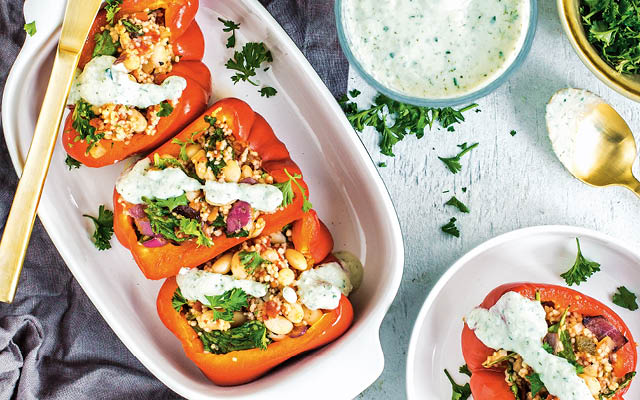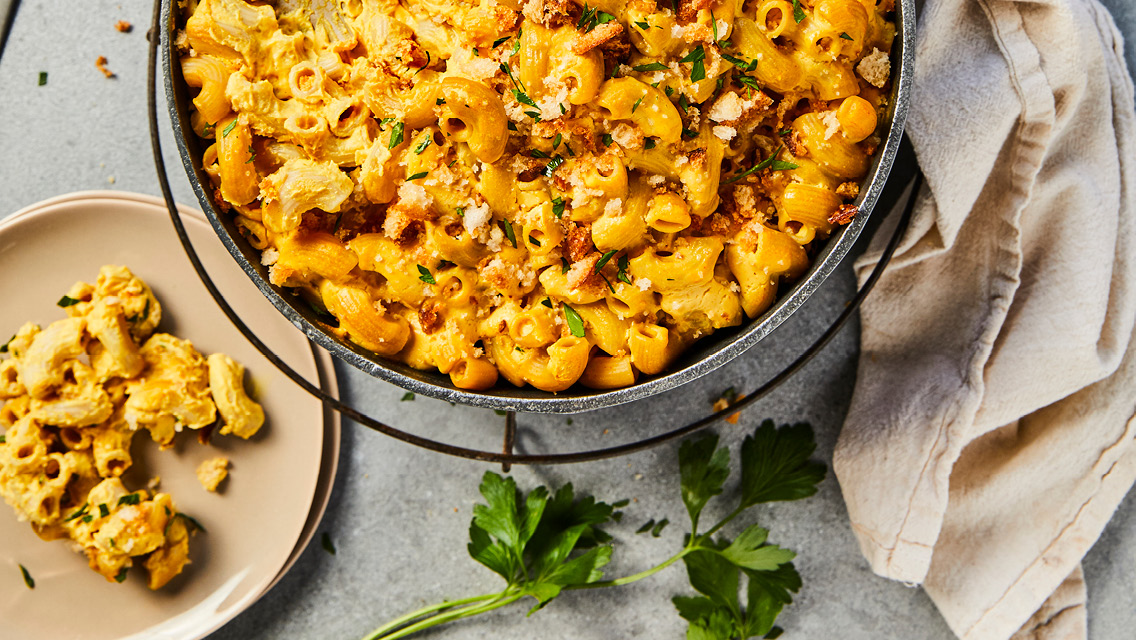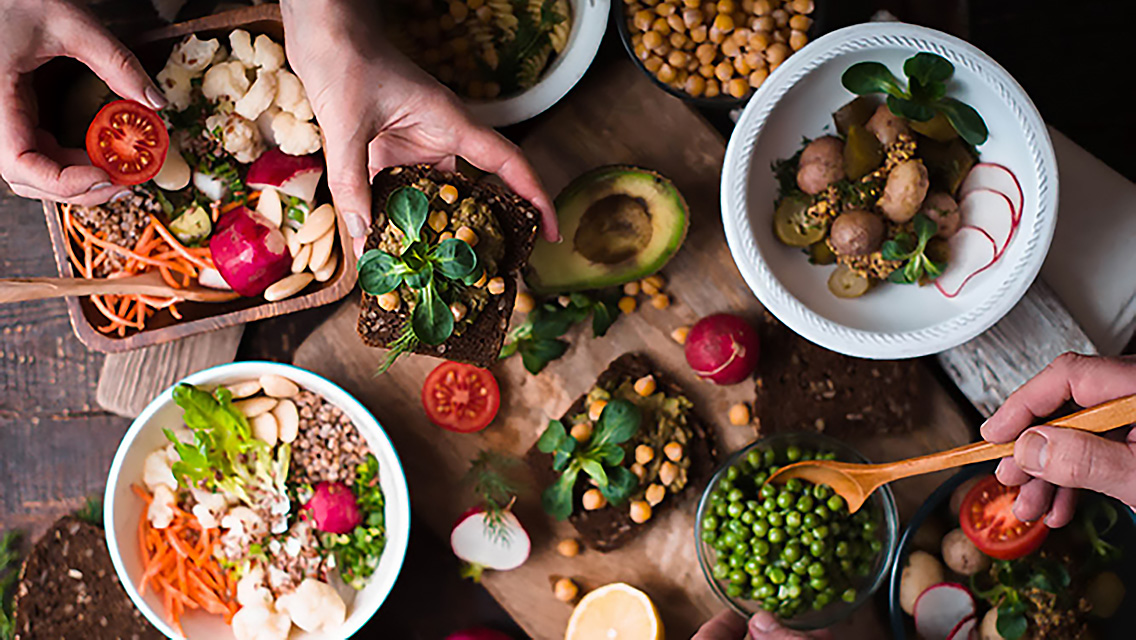Wanted Alive
For years, nutritionists have categorized foods into groups — meats, grains, legumes, fruits, etc. — and by now we’re all familiar with the USDA’s “food pyramid.” But there is another way of thinking about and categorizing the foods we eat, a way that may actually offer much more meaning and value than our more traditional distinctions: What if we thought about foods in terms of whether or not they are alive?
This distinction between living and dead foods may be unfamiliar to most of the American public, but to many of today’s forward thinking nutritional experts, it is a very real and important one. In fact, many nutritionists have long insisted that eating a diet rich in raw and other “live” foods is the single most important thing you can do to improve and preserve your health.
Live foods are foods that are consumed fresh, raw and/or in a condition as close as possible to their original, vibrant, living state. Consider the difference between crisp red apples and beige, jarred applesauce; between green, ripe avocados and grayish, reconstituted guacamole dip; between a piece of salmon sashimi and a frozen fish stick; between sweet corn on the cob and a box of cornflakes. You get the picture.
Depending on which expert you are consulting (and how much of a purist he or she is), the term “live food” may refer strictly to raw fruits and vegetables and sprouted nuts and grains. Or, it might also include whole, unpasteurized, organic milk products (illegal in most states!), frozen berries, and even very lightly “cooked” items like seared fish and air-dried pizzas.
The basic idea behind all live foods is the same though: retaining the very best that natural foods have to offer, including live enzymes, antioxidants and other nutrients.
The Enzyme Connection
The naturally occurring enzymes, nutrients and pure, filtered water found in living foods are all vital to our health and immunity, and most experts agree they can never be sufficiently replaced by supplements and powders.
Enzymes are complex organic substances that originate from living cells. By initiating chemical changes in surrounding organic substances, they help to transform and digest them. This is the mechanism you see at work in enzymatic cleansers that lift dirt out of tough stains in your laundry. The same principle is also behind “Beano,” “Dairy Ease” and other enzyme-based supplements that aid people in ingesting foods that might otherwise give them digestive trouble.
But enzyme supplements aren’t the only place (or the best place) to get your digestive help. Live foods are treasure troves of living enzymes, phytonutrients and other compounds that are essential to proper digestion, absorption, elimination, immunity and health. Unfortunately, virtually none of these delicate entities can survive temperatures greater than 116° Fahrenheit (most enzymes start to degrade at about 106°), so they are generally destroyed by the heat of cooking and most commercial processing.
People who make a conscious effort to include a large percentage of live foods in their diets often notice rapid and dramatic results including leaner, stronger physiques, higher energy levels and better athletic endurance..
Most experts agree that by foregoing such processing and eating foods more or less as nature prepared them, we retain their cellular structure and, thus, far more of their nutritional value. We also enjoy a wide array of important, accompanying health and beauty benefits.
People who make a conscious effort to include a large percentage of live foods in their diets often notice rapid and dramatic results including leaner, stronger physiques, higher energy levels and better athletic endurance. Many also enjoy a variety of other benefits — from increased mental alertness and focus to rapid healing and recovery, improved eyesight and peripheral vision¸ brighter moods and clearer, more radiant skin.
Oh, and there’s another important and frequently noted upside: enhanced sex drive and performance. (No wonder those crazy rabbits eat all those carrots!)
Reaping the Harvest
Live foods experts say all these benefits stem from a simple synergy. Live foods naturally contain more nutrients (flavanoids, caratanoids), but they also contain the enzymes and other components that naturally enable our bodies to optimally process those nutrients.
The enzymes in live foods act very much like catalytic converters for general digestion, helping our bodies to properly absorb and eliminate even the cooked and other processed, non-live foods we consume. Most live foods are also high in fiber. So eating live foods helps your system make better use of virtually every healthy thing you eat, while also running damage control on the not-so-healthy stuff you gobble down.
Without live foods to help break up and move dead foods along, hard-to-digest items can easily decompose and turn toxic in the intestine, causing the body all kinds of harm.
Eating more live foods can help your metabolism hum along at peak efficiency while saving your system from getting bogged down in toxic waste. By the same token, a person who does not eat enough live foods is much more likely to suffer from low energy, excessive weight, skin problems, food allergies, heartburn, intestinal distress and constipation.
Why?
Without live foods to help break up and move the dead foods along, these hard-to-digest items can easily decompose and turn toxic in the intestine, causing the body all kinds of harm.
Moreover, without enzymes, no vitamins or minerals can accomplish their nutritive missions. As a result, a diet too laden with dead foods and too lacking in live ones can lead to malnutrition (regardless of how much a person eats). Subsequently, malnutrition can cause illness, compromise immunity and hasten death.
Get Eating
So, by now you are probably looking for some simple ways to incorporate more living foods into your diet (without moving to a hut in Costa Rica, freaking out your friends or scaring your children).
One way is to think green. Experts say that green, leafy vegetables such as spinach, kale, romaine lettuce, arugula and Swiss chard are great sources of living phytochemicals. They are also great complements to any meal.
The healthiest way to enjoy these foods is as a first course. Leafy greens can be digested quickly if eaten on an empty stomach, or along with other healthy vegetables such as sprouts, peppers, onions, cilantro, radishes or any fresh salad ingredient. An exception is cucumber or any other fruit from the melon family. These are known to create a chemical “conflict” in the stomach that slows digestion. (That’s why cukes cause some people to burp.) But eaten alone, both melons and cucumbers are highly digestible and extremely healthful.
Fresh fruit is another great way to add living foods to your diet. Nothing is faster (or better for you) than a simple breakfast of fresh fruit. Whether oranges, plums or pineapples, fruit provides a healthy dose of needed sugar along with the natural enzymes and vitamins your body needs. This kind of meal is a gentle jump-start to the day, and much more energizing than a heavy, greasy load of hashbrowns, eggs and bacon.
Bonus: If you consistently make a fruit breakfast part of your morning regimen, you may see your caffeine consumption naturally decrease as your living-food vitality increases.
Making a Change
It’s important to take a common-sense approach when shifting your diet toward living foods. To avoid a massive, sudden detox and potential withdrawal symptoms (which could lead to an unhealthy junk-food binge), be sure to wean yourself from your regular diet gradually as you incorporate more live foods into each meal. After a few months of transition time, you can begin to eat entire meals of fresh, living foods.
If you want to make a faster start, consider a mono-diet fast (having only fruits and vegetables for a few days), but be sure to consult a natural-health professional or a good book on the subject first. Live-food fasting is a great way to give your body a chance to detoxify and heal itself, but you’ll have the best success if you are well-informed before you begin.
Carrot or the Stick
Whether you respond more powerfully to the benefit-oriented aspects of the live-foods proposition (health, beauty, vitality!), or the more ominous repercussions of going without them (disease, obesity, death), the argument for live foods is a pretty straightforward one.
Fad diets and wonder supplements aside, eating plenty of fresh, live foods is the most reliable way to permanently reduce fat while achieving robust health. So ultimately, what your mother told you about an apple a day keeping the doctor away is probably pretty well-founded. Just to be on the safe side, though, better make that an apple, a carrot, a beet, and a giant green salad.
Surviving the Stomach
For years, health experts have argued about whether or not the acidic PH of the stomach summarily destroys live food enzymes. Some scientists have insisted that stomach acid kills most enzymes on contact, thereby rendering useless the considerable efforts raw food eaters take in preserving and consuming them.
However, research by Viktorus Kulvinskas, a leading expert on raw foods and enzyme nutrition, suggests that stomach acid does not in fact kill, but rather temporarily deactivates most food enzymes. According to Kulvinskas, the enzymes are then reactivated in the more alkaline small intestine.
Raw Intelligence of Half-Baked Idea?
Raw foodism (eating raw, living foods exclusively) is a trend that is gaining popularity with all kinds of people, from small-town gardeners to Hollywood celebrities. For most of us, committing to a diet of all raw foods still seems pretty extreme. Who wants to totally give up grilled foods, our favorite pasta dishes or the occasional order of fries? Plus, some nutritionists insist that many foods are actually better assimilated by the body in cooked form.
Regardless of whom you want to believe, though, there’s no doubt most of us could stand to weed out a lot of processed, packaged foods and replace them with fresher, more wholesome options.
Do a Live-Foods Inventory
You won’t eat live foods if you don’t have them around the house. So what’s in your kitchen, and where is it living? How much live food do you really have on hand?
- On the Shelf: If most of your food lives on a shelf or in the cupboard, it probably isn’t live food at all. Almost any food that can survive unrefrigerated for more than a few days is likely canned, boxed, cooked, dehydrated, vacuum packed, ultrapasteurized or otherwise processed (which is to say, it is largely dead). There’s nothing wrong with having some dry staples and gently processed foods in your house, of course, but if less healthy shelf-dwellers like chips and crackers constitute the bulk of your available nourishment, watch out.
- In the Dark: Some foods that do have a decent shelf-life include potatoes, yams, onions, garlic, squash and other root vegetables, most of which do well unrefrigerated for long periods, as long as they’re kept in a relatively cool, dark place. Of course, most people end up cooking these items at some point, and once cooked, they are no longer considered live. Even cooked, though, many of these foods are still quite nutritious, and most can be eaten raw (just check the books in the Resources section for advice and preparation instructions).
- In the Open: In the old days, nearly everyone used to have a tempting fruit bowl right out in plain site. For some reason you don’t see fruit bowls so much anymore. That’s a shame, because most fresh fruits, including peaches, pears and plums (as well as tomatoes and avocados) belong here, not in your refrigerator (at least, not until they are sliced or they’ve reached their peak of ripeness). If you’ve got nothing but a mushy banana or two sitting around on your counter, repent. Keep a bowl of tempting produce where it’s handy to snack on or slice into salads and sandwiches.
- In the Ice Box: Welcome to the fridge — you’ve hit the motherload of live, raw foods. Chilled watermelon, grapes, cherries and apples, crunchy carrots and cucumbers, green leafy vegetables, fresh herbs — if it’s in the refrigerated produce section at the grocery store, it probably belongs in your fridge at home. That goes double for perishable oils, like flaxseed oil and nut butters, as well as sesame and olive oils more commonly found on the shelf.
If you’re eating live and fresh, your fridge should be full of brightly colored produce. If, on the other hand, you open your ice box door and find nothing but condiments, cheese, cold cuts and soft drinks, there’s a good chance you’re diet is in trouble.
Check out the freezer, too. Most experts agree that most kinds of produce, if picked at the peak of ripeness and quickly frozen, offer many of the same benefits of their fresh counterparts. If you can thaw produce and eat it as is, or (as with frozen berries and bananas) blend it into a smoothietype concoction, you can still call it live. Just remember, all bets are off if you have to cook it before you eat it. And if your freezer only contains pizza rolls, tater tots and ice cream, consider a change.
This article has been updated. It was originally published in the August 2001 issue of Experience Life.




This Post Has 2 Comments
[…] https://experiencelife.lifetime.life/article/live-foods/ Read the guzzFit EAT page to motivate yourself towards replacing 1 or 2 meals a day with 180 […]
[…] Live foods are natural plant-based foods eaten in their raw, unprocessed state. This means foods that grow from the earth, plants, shrubs, and trees, such as vegetables, fruits, nuts, grains, and seeds. Increasing your living foods does not mean that you have to eat only raw vegetables. It simply means the following: […]